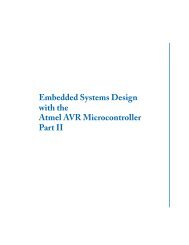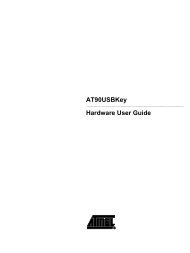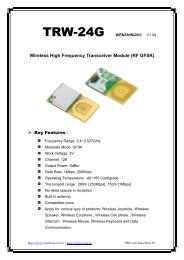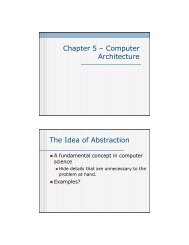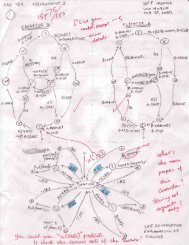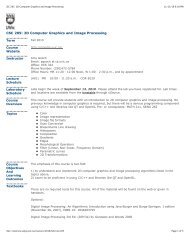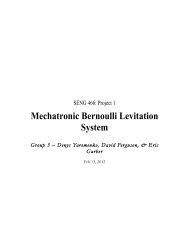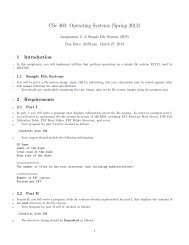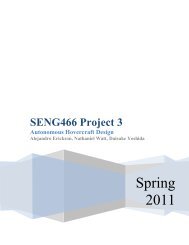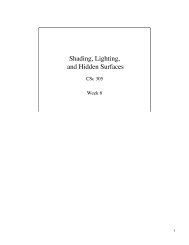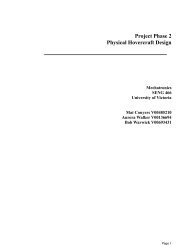Icon - Department of Computer Science - University of Victoria
Icon - Department of Computer Science - University of Victoria
Icon - Department of Computer Science - University of Victoria
Create successful ePaper yourself
Turn your PDF publications into a flip-book with our unique Google optimized e-Paper software.
fields fA(p) and fB(p) can be simply defined as follows:<br />
fA+B(p) = fA(p) + fB(p) (2.5)<br />
Nevertheless, this operator does not provide any manipulation <strong>of</strong> blending. To achieve<br />
more flexible blending, Ricci introduced another blending operator fA♦B(p) by pro-<br />
viding a parameter n [42]. This blending is referred to as Ricci blend while Equation<br />
2.5 is called summation blend. Ricci blend is defined as follows:<br />
12<br />
fA♦B(p) = (fA(p) n + fB(p) n ) 1<br />
n (2.6)<br />
By changing n, the amount <strong>of</strong> blending can be manipulated (Figure 2.5). As one<br />
property, Ricci blend can represent another operator by substituting a particular<br />
number for n. For example, fA♦B(p) = fA∪B(p) where n = ∞, fA♦B(p) = fA∩B(p)<br />
where n = −∞, and fA♦B(p) = fA+B(p) where n = 1.<br />
Figure 2.5: Two implicit spheres to which Ricci blend is applied and the result scalar<br />
fields. Blending parameter n = 1 (a), n = 2 (b), and n = 4 (c).<br />
2.2 Rendering<br />
Implicit surfaces are rendered by evaluating field values <strong>of</strong> a scalar field. A set <strong>of</strong> points<br />
which store the iso-value is visualized as the iso-surface. Rendering implicit surfaces<br />
are not straightforward compared to polygon meshes because they are not defined


